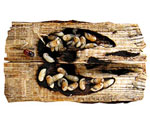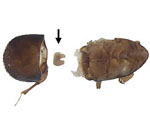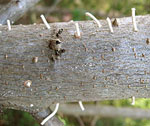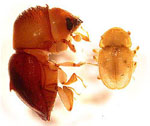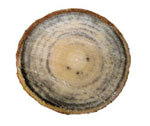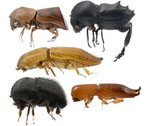Who are Xyleborini?
Ambrosia beetles are destructive yet fascinating. One of the most successful and widespread cases of insect-fungus symbiosis, ambrosia beetles are the product of sixty million years of intricate mutualism between the fastest evolving beetles and some of the most bizarre fungi. From the biologists perspective, these fungus-farming beetles are one of the more unusual and interesting beetle groups. From an orchard owners perspective, the efficiency with which these beetles can transmit lethal tree pathogens is alarming. Their unparalleled ability to invade new bioregions is increasingly turning them into a major phytosanitary threat worldwide. The redbay beetle is threatening the existence of the avocado industry in Florida, Asian ambrosia beetles are replacing native fauna throughout the southeastern US while inexplicably attacking live trees in nurseries, and the oak pinhole borer in Japan is destroying ancient oak stands. Hundreds of other barely known species exist in tropical forests around the world, vectoring fungi about which we know literally nothing. Each of these represents a potential threat, for which no methods of control currently exist.
Xyleborini is the most important and species-rich tribe of ambrosia beetles. This group contains more invasive pests than all other ambrosia beetle groups combined. The majority of xyleborines invading North America and Europe have been drawn from the large pool of species in tropical and subtropical forests. For more information about Xyleborini or about the beetle-fungus symbiosis, see the Ambrosia Symbiosis Website or the References section here.
About this tool
We are proud to present the first on-line, illustrated, and up-to-date identification tool and information resource for all 36 Xyleborini genera from around the world.
Xyleborines are the most frequently intercepted organisms at ports-of-entry, yet no comprehensive and stable classification has yet been designated, and no other usable tools for identification exist. Only recently have molecular and morphological methods provided better resolution of intra-group relationships, culminating in a recent revision of the whole generic concept of Palearctic Xyleborini (see References for details).
To address the void of identification tools for Xyleborini, and to assure the utility of the new classification of the Xyleborina for forestry, quarantine facilities, and researchers, the author of the new classification and USDA-APHIS-PPQ-CPHST have joined forces in turning the classification into an on-line, richly illustrated, user-friendly identification and information tool.
The classification used here is up to date as of December 2010. It is based on a comprehensive review by Alonso-Zarazaga and Lyal (2009), and includes the most recent taxonomic changes by Hulcr & Cognato (2009, 2010).
Jiri Hulcr
(personal info)
Please let us know your comments or suggestions. Click here for contact info.
Suggested citation for images and website content: "Hulcr, J., Smith, S. (2010): Xyleborini ambrosia beetles: an identification tool to the world genera. URL: http://itp.lucidcentral.org/id/wbb/xyleborini/index.htm"

